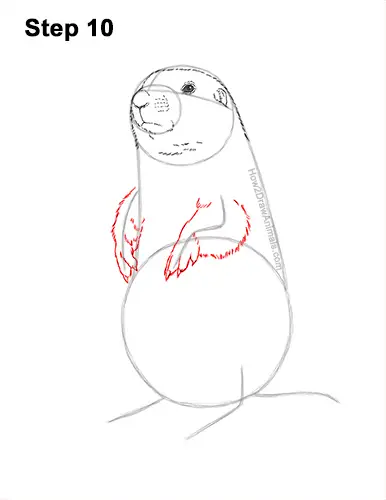
Step 10: Use the angled line in the middle of the body as a guide to draw the prairie dog's front leg. Draw the toes around the bottom of the guide line. Each toe is similar to the letter U. Add a small, pointy triangle on the bottom of each toe for the nails. At the top, draw the shape of the leg around the guide line. Make the shape of the leg wide and use short strokes for a furry texture. Draw the leg on the left the same way. Draw the toes at the bottom of the guide and make the tips pointy for the nails. Draw the shape of the leg around the guide line using short strokes.
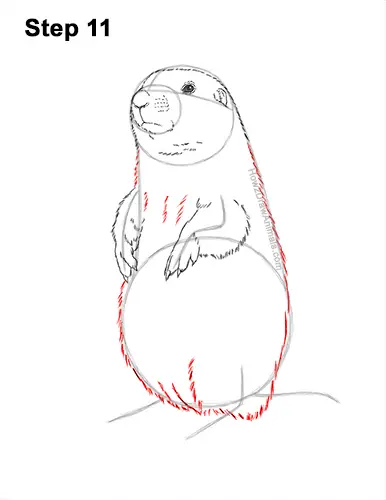
Step 11: Draw the rest of the prairie dog's body by using the shapes in the middle as guides. Simply darken the outer edges of the guides using short strokes to create the furry shape of the body. Add a few strokes between the top legs for the chest and more strokes at the bottom for the legs.
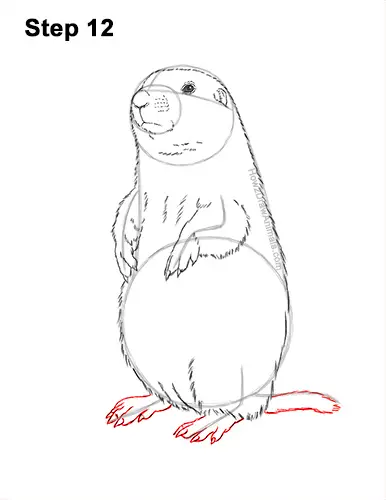
Step 12: Use the lines under the body as guides to draw the prairie dog's feet. Draw the shapes of the feet around the guide lines. Use short, curved lines along the tips of the guides for the toes. On the tip of each toe, draw a small, triangular shape for the nails. Keep the edges of the feet close to the guides so that the shapes are thin. Sketch lightly at first and only darken the lines when you get the shapes right. Use the line on the right as a guide to draw the tail. Make the shape of the tail thicker and use short strokes for a furry texture.
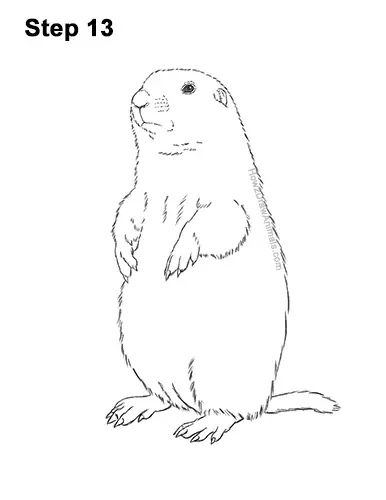
Step 13: For a cleaner look, erase as much as you can of the initial guide lines. Don't worry about erasing all of the guides. It's okay to leave some behind. Re-draw any final sketch lines you may have accidentally erased.
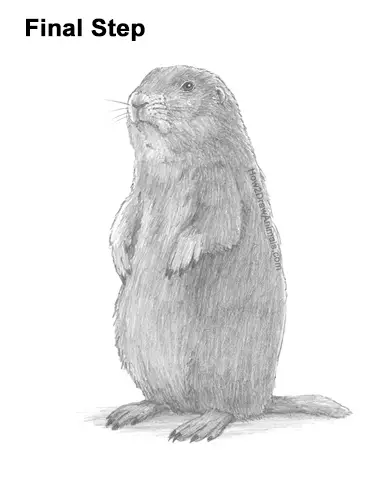
Final Step: Shade your prairie drawing for extra detail. Shade lightly at first and gradually build up to darker values. For light values, push down very lightly on your pencil and push down harder for darker values. As you shade the body, use strokes that go in the general direction of the fur. The strokes on the head should radiate out from the nose while the strokes on the body should be mainly vertical. As you shade, separate each stroke a bit so that the white of the paper comes through and creates a more furry texture. Shade the muzzle and underside of the body using a lighter value. Add long strokes on the sides of the muzzle for whiskers. Use a dark value to shade the nails.
Add a darker value throughout the body to create shadows. Pick a light source as you shade so that the shadows are consistent. Here the light source is coming from the top, so most of the shadows are on the underside of the shapes. It's a good idea to use reference as you shade for a more accurate depiction of a prairie dog. Shading can be time-consuming, so be patient and take breaks. For a more detailed guide on how to shade, check out this tutorial: How to shade.
Thanks for visiting! Subscribe to the How2DrawAnimals YouTube Channel for a new tutorial every week.
To learn how to draw popular cartoon characters, visit EasyDrawingTutorials.com.
To learn how to draw Manga, visit How2DrawManga.com.
RELATED TUTORIALS
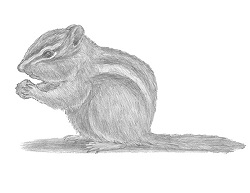 |
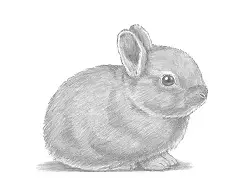 |
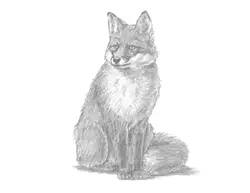 |







